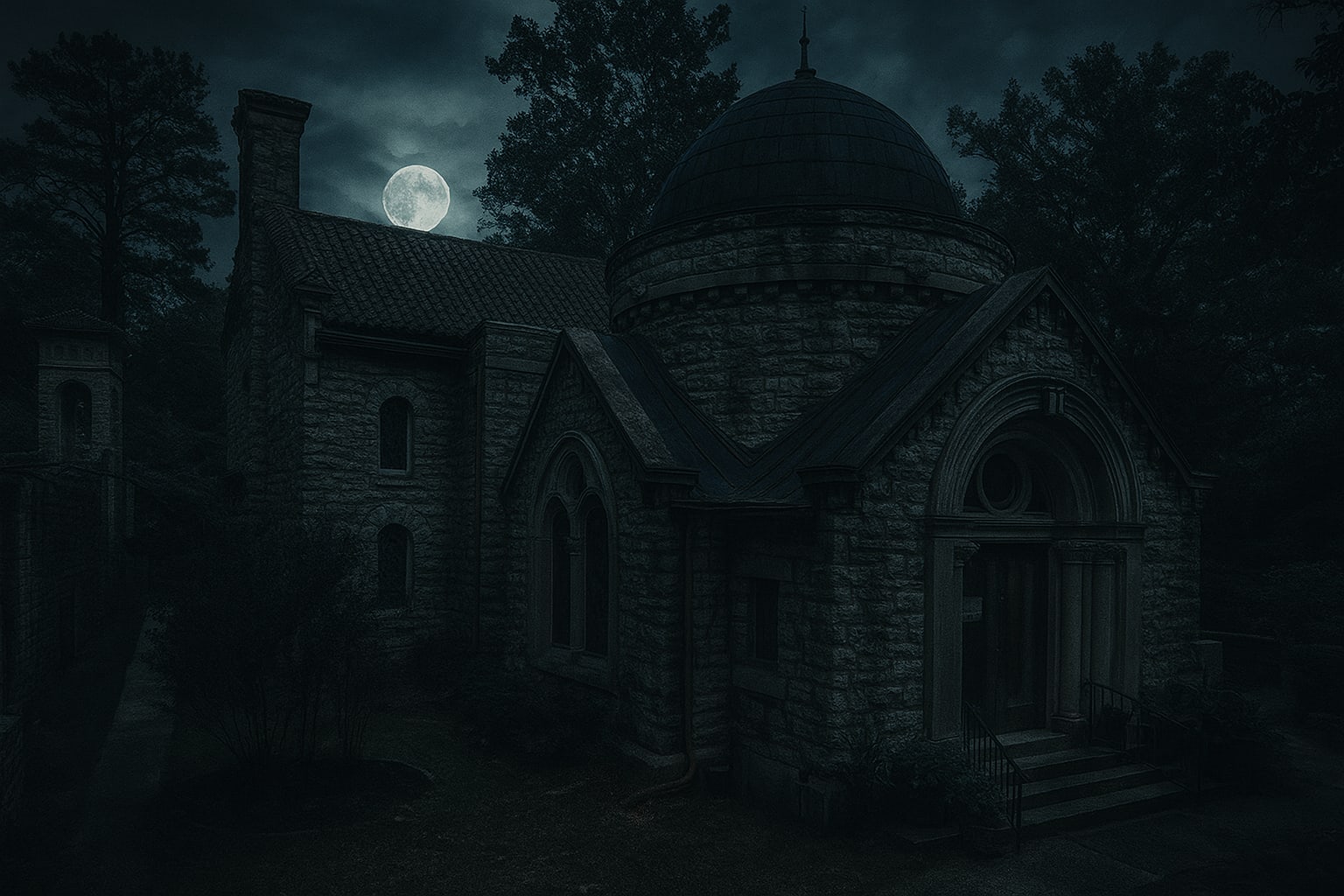It isn't often that a church comes with its own ghost stories—especially one as picturesque and beloved as St. Elizabeth's Catholic Church in Eureka Springs, Arkansas. But like many buildings in this famously haunted town, St. Elizabeth's carries the echoes of the past in more ways than one. If you were to ask the locals, they'd tell you it's not just the beauty that keeps people returning to this stone sanctuary on the hill. There's something else here. Something...otherworldly.
Let's take a step off the beaten path and wander through the solemn history and mysterious legends of one of Eureka Springs' most enduring landmarks.
A Church Unlike Any Other
Located at 30 Crescent Drive, just a short stroll from the Crescent Hotel, St. Elizabeth's Catholic Church is more than just a place of worship. Built in 1904, this stone church was crafted from native limestone and features an architectural layout that leads visitors through its bell tower, serving as the main entrance—a rare design that only adds to its charm. In fact, St. Elizabeth's is one of the few churches in the world that you actually enter through the bell tower.
Built into the hillside, the church offers stunning views of the surrounding Ozark Mountains. Its rose windows, stained-glass accents, and traditional layout have made it a favorite location for weddings, quiet prayer, and local sightseeing. But for all its charm and beauty, the church and its grounds carry the heavy weight of time. Visitors have long whispered about the sensations they feel here—a subtle chill, a brush of unseen hands, or the inexplicable sense that they're not alone.
A Sacred Spot Before the Church
Before St. Elizabeth's ever rose from the limestone bluff, this hillside was already considered sacred. Indigenous peoples are believed to have used the area for ceremonial purposes, drawn to the mineral-rich waters and quiet seclusion of what would later become Eureka Springs. Some historians suggest that natural springs near the site were used in cleansing rituals, marking the area as a place of healing and transition.
It's not a stretch to believe that spiritual energy remains imprinted on the land. Layer that with over a century of baptisms, funerals, confessions, and personal prayers, and you have a setting rich with emotional residue. As paranormal investigators often point out, places of intense spiritual focus—like churches and cemeteries—tend to attract or anchor ghostly energy.
The Lady in White
Perhaps the most famous ghost said to haunt St. Elizabeth's is the Lady in White. She has been spotted in the church gardens during twilight hours, wearing a flowing white gown and often clutching a rosary. Witnesses describe her as serene, though sorrowful—a figure who disappears as quickly as she appears. Some believe she is the spirit of a bride who died shortly before her wedding day, choosing to remain near the site of her would-be ceremony.
Others claim she may have been a nun or devoted parishioner who lived in nearby housing for the clergy. Regardless of her origin, she has become part of the church's fabric. Tourists have unknowingly taken her photo, only to find a spectral figure on their camera later. Some have even heard soft weeping in the garden chapel, with no living soul in sight.
The Spirits of the Bells
You might think the bell tower would be free of ghostly activity, but you'd be mistaken. Staff and clergy have reported hearing footsteps on the stairs when no one is there. The bells themselves have been known to chime at odd hours, including the dead of night—something that should be impossible, given that they are manually operated.
One retired caretaker tells a story of locking up the church after a late-night wedding rehearsal, only to hear the bells ring out behind him as he crossed the street. He turned, thinking someone had returned, but the church was empty, dark, and locked tight.
Graves and Shadows
Though not a traditional cemetery, the grounds surrounding the church do feature memorial plaques and urns interred within the hillside. Visitors walking the path up to the church have reported strange shadows moving just out of the corner of their eyes. Some feel a sudden sense of grief or heaviness near these markers, even if they didn't notice them at first.
More than one visitor has mentioned seeing a hunched figure kneeling beside one of the plaques, only to vanish when approached. It's moments like these that make even the most skeptical question their senses.
Reviews and Rumors
Online reviews of the church sometimes include more than just compliments about the architecture. "Felt like someone was standing right next to me in the garden, even though I was alone," one reviewer wrote. Another added, "I took a picture of the altar, and there was a light anomaly that looked like a human silhouette."
Locals also whisper about strange occurrences during Mass: flickering lights, doors that close on their own, and candles that refuse to stay lit. One former parishioner said, "I always felt like someone was praying behind me—but when I turned around, the pews were empty."
A Living Landmark
Despite its spectral guests, St. Elizabeth's is still a fully functioning parish. It holds regular Mass, weddings, and community events. Visitors come for the tranquility and often leave with a story they didn't expect. Whether you believe in ghosts or not, there's no denying the church's atmosphere. It invites contemplation, respect, and perhaps, just a little curiosity about what exists beyond this life.
In a town where nearly every old building comes with a tale, St. Elizabeth's stands out not only for its faith and architectural beauty but for the subtle whispers of the past that seem to linger in the breeze.
Haunted or not, St. Elizabeth's is a place where time feels thin—where past and present brush shoulders in the stillness of a garden breeze or the toll of a lone bell. Whether you come for the history, the mystery, or just a peaceful walk through sacred grounds, you might find yourself wondering if someone else is walking with you.

The neo-Gothic spire of St. Elizabeth Church reaching toward heaven

The sacred altar where countless prayers for healing were offered

